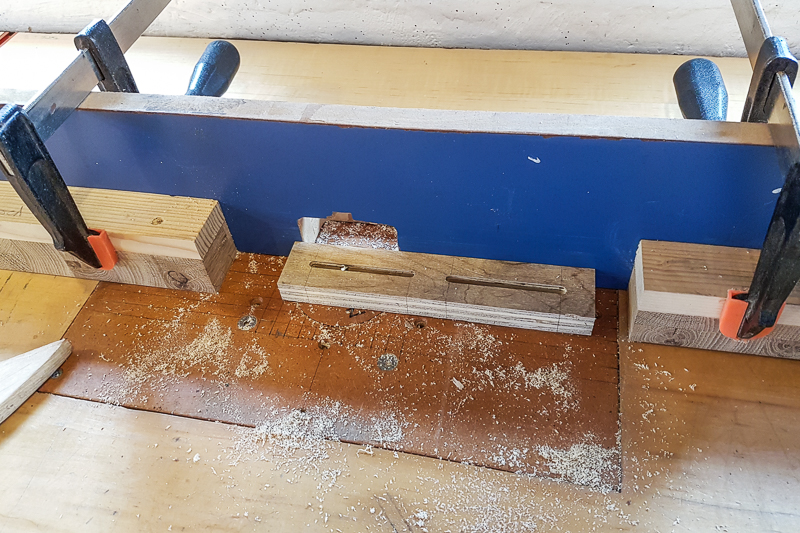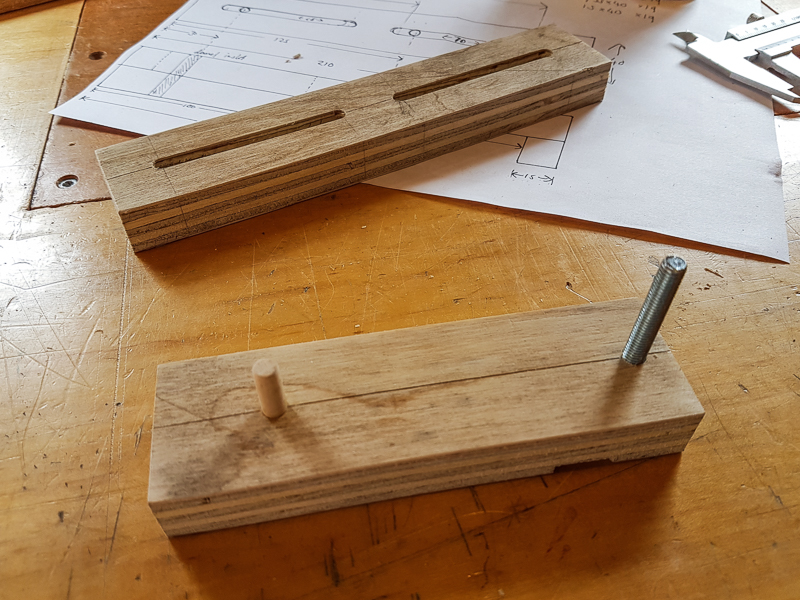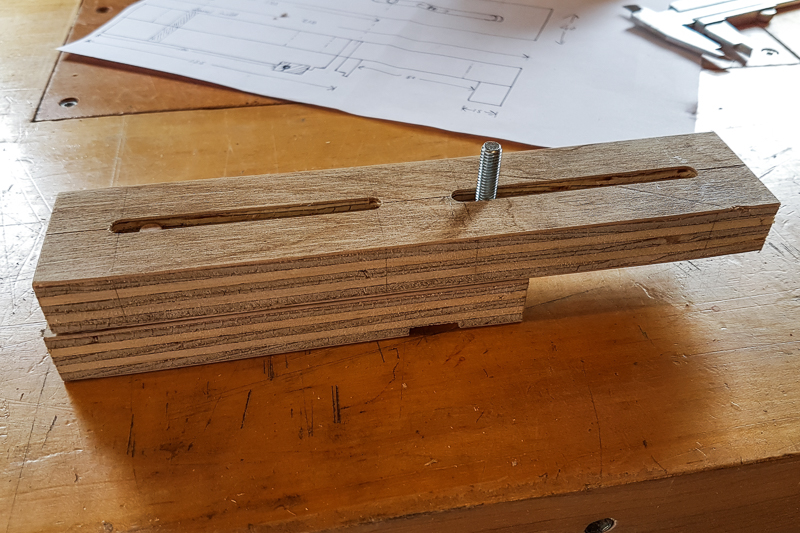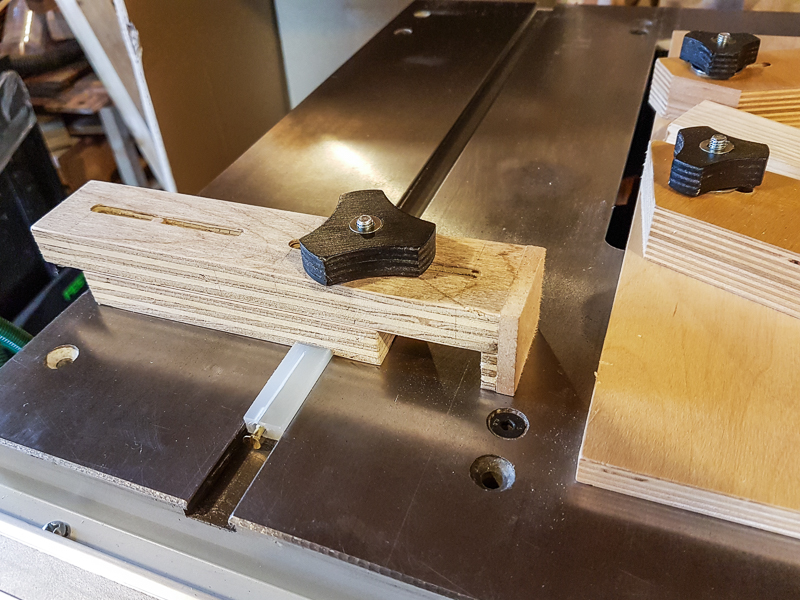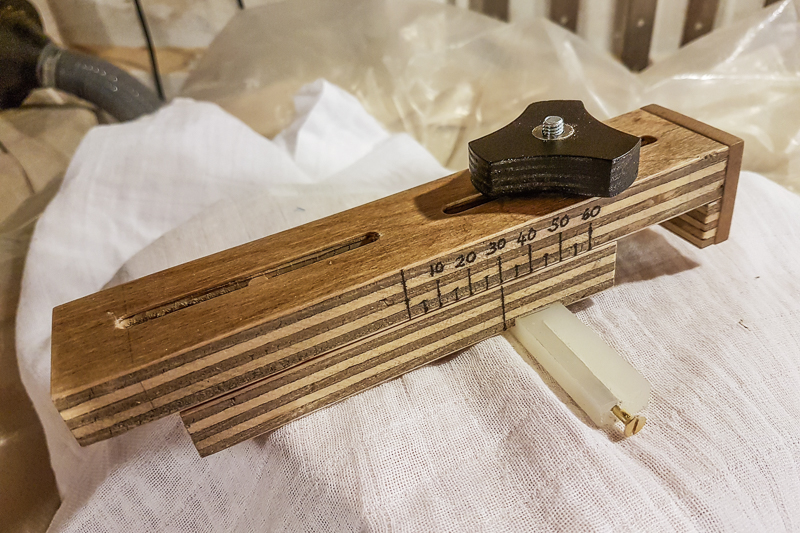sploo
Somewhat extinguished member
I've just started woodturning, and my long term goal is to make segmented bowls and vases. A bit of research led me to the Hybrid Wedgie Sled, and the Seg Easy website (http://segeasy.com/).
Based on the instructions, I wanted to create a sled, but given the need for the angle setting wedges (and for the angles to be perfect) I decided it was time to fire up the quattr... errr CNC machine.
I cut the sled, the wedges, and a number of knobs from 1/2" birch ply:
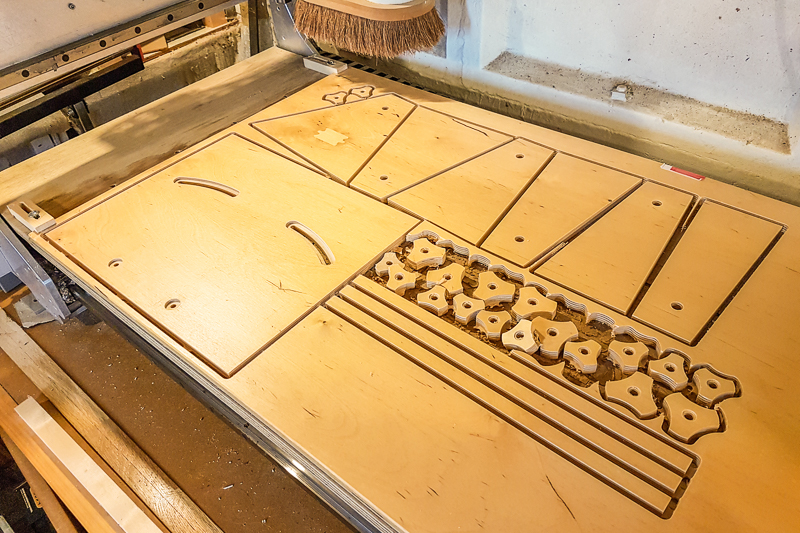
The fences were cut from the same ply, but laminated together for 1" thickness:
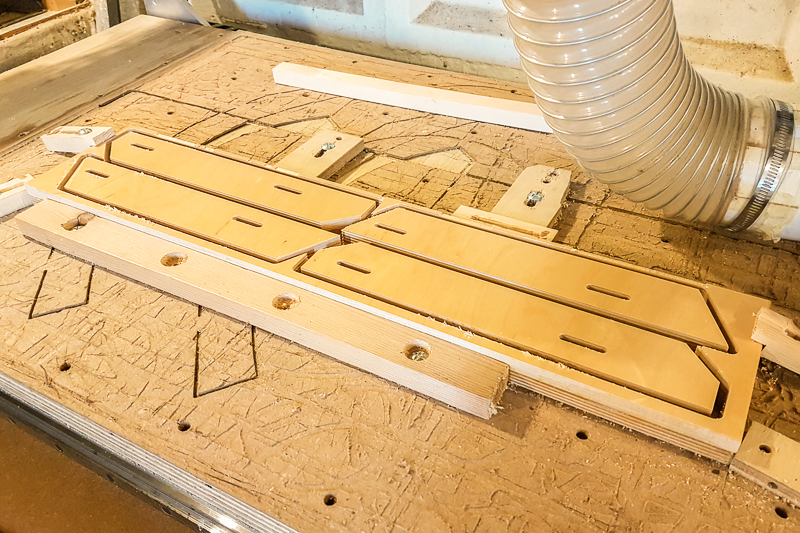
My saw is small (an Axminster TS200) and the table slots are very shallow. As a result you really need to put a dado on a sled for the runner (otherwise the runner is too thin), which I did later on the router table (once I'd worked out exactly where I wanted it):
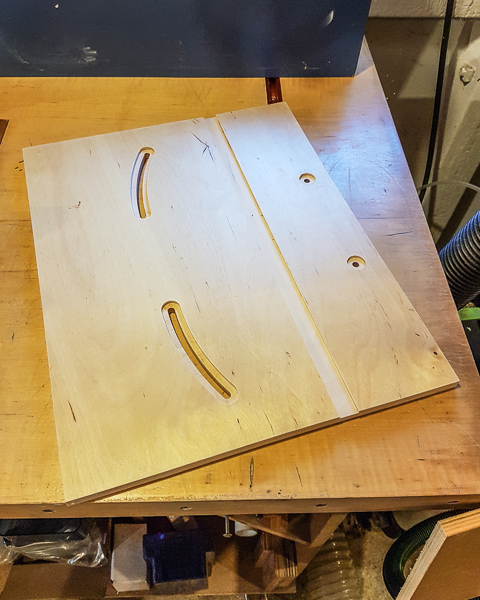
The long rectangles in the first image were intended to be runners, but in the end I went by the instructions and used some oak, with a hole, slot and a screw - it works surprisingly well (you can also see one of the wedges in place, to set the angle between the fences):
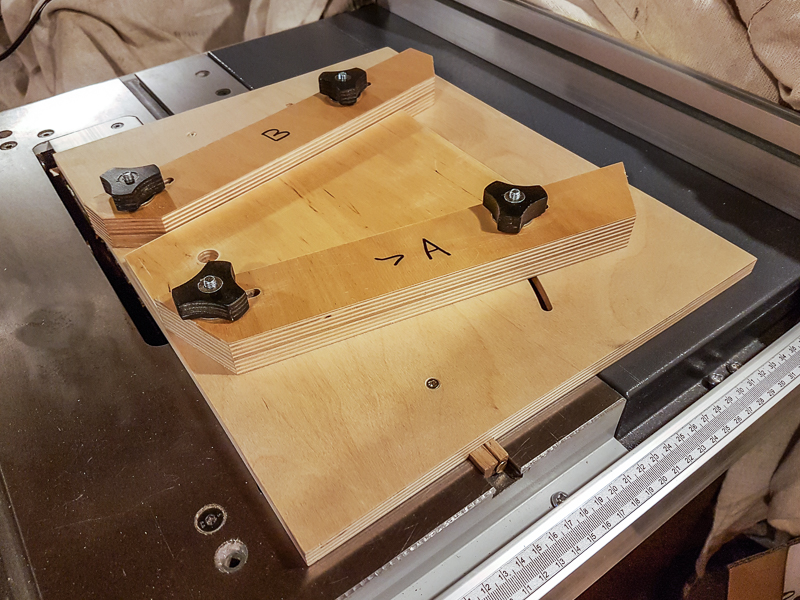
I was initially reluctant to mill the slots on the fences (preferring just a couple of holes), but I'm glad I did. As you change the angles of the fences it's useful to be able to slide them towards or away from the blade, to maximise support but also minimise damage to the fences.
Part 2 coming in a mo'...
Based on the instructions, I wanted to create a sled, but given the need for the angle setting wedges (and for the angles to be perfect) I decided it was time to fire up the quattr... errr CNC machine.
I cut the sled, the wedges, and a number of knobs from 1/2" birch ply:

The fences were cut from the same ply, but laminated together for 1" thickness:

My saw is small (an Axminster TS200) and the table slots are very shallow. As a result you really need to put a dado on a sled for the runner (otherwise the runner is too thin), which I did later on the router table (once I'd worked out exactly where I wanted it):

The long rectangles in the first image were intended to be runners, but in the end I went by the instructions and used some oak, with a hole, slot and a screw - it works surprisingly well (you can also see one of the wedges in place, to set the angle between the fences):

I was initially reluctant to mill the slots on the fences (preferring just a couple of holes), but I'm glad I did. As you change the angles of the fences it's useful to be able to slide them towards or away from the blade, to maximise support but also minimise damage to the fences.
Part 2 coming in a mo'...




